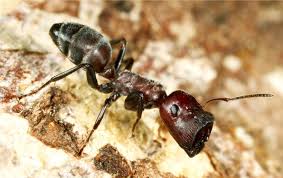Carrie Battan at The New Yorker:
If you need more proof that reality television and social media are this era’s greatest cultural incubators, look no further than Cardi B (born Belcalis Almanzar), the twenty-five-year-old Bronx native who has taken an unprecedented but well-documented path to pop-world domination. In 2014, while working as a stripper, she launched a grassroots campaign for her personality on Instagram and Vine, posting bawdy, unflinching videos in which she monologued about whatever was on her mind—unfaithful boyfriends, the indignity of backhanded compliments, the relative merits of ihop and Philippe Chow—in a thick New York Spanish accent. She sometimes wore nothing but a shower cap. “I ain’t gon’ lie to y’all, these terrorist attacks got my mental a li’l finicky. That’s why I been in the Bronx,” she said in one video, from 2015. “Keep me away from downtown. Ain’t nobody tryna blow up the hood. ”
These little gems of street wisdom got her cast in Mona Scott-Young’s VH1 reality series “Love & Hip Hop.” A chatterbox with a refreshingly unvarnished self-presentation, Cardi, in perhaps her greatest accomplishment, inverts the uses of the platforms she first called home: in her universe, social media and television serve as megaphones for candor and exuberance rather than for deception or artifice.
more here.

 Outside the kitchen door at the Kuala Belalong Field Studies Center in Brunei, on a number of trees near the balcony, there is a nest of very special ants. They explode.
Outside the kitchen door at the Kuala Belalong Field Studies Center in Brunei, on a number of trees near the balcony, there is a nest of very special ants. They explode.
 The marriage of sated appetites and adventurous conversation has a long history. In Ancient Greece, philosophical discourses were washed down with jugs of wine at banquets known as symposia. There was always a risk that some people would over-indulge. In the most famous description of a symposium, Plato describes how the guests, who included Socrates and Aristophanes, were expounding on the nature of love when they were interrupted by the arrival of a boozed-up general, Alcibiades. Table talk was considered an art to be mastered. Athenaeus, a Greek grammarian of the third century AD, wrote a 15-volume work entitled Deipnosophistae (“The Learned Banqueters”) about a series of dinners in which conversation ranged from philology to homosexuality.
The marriage of sated appetites and adventurous conversation has a long history. In Ancient Greece, philosophical discourses were washed down with jugs of wine at banquets known as symposia. There was always a risk that some people would over-indulge. In the most famous description of a symposium, Plato describes how the guests, who included Socrates and Aristophanes, were expounding on the nature of love when they were interrupted by the arrival of a boozed-up general, Alcibiades. Table talk was considered an art to be mastered. Athenaeus, a Greek grammarian of the third century AD, wrote a 15-volume work entitled Deipnosophistae (“The Learned Banqueters”) about a series of dinners in which conversation ranged from philology to homosexuality.